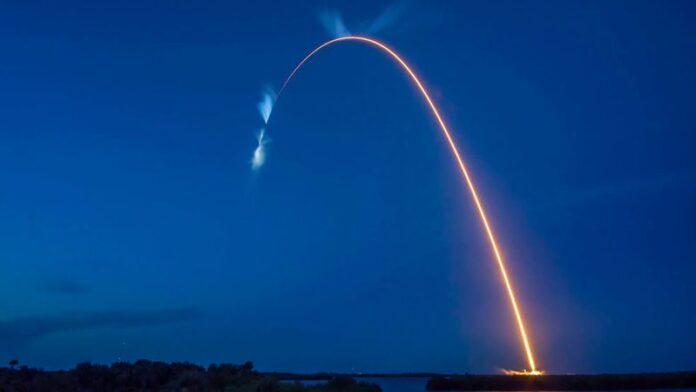Sign up for CNN’s Wonder Theory science newsletter. Explore the universe with news of amazing discoveries, scientific advances, and more.
CNN
–
When SpaceX’s 26th Commercial Resupply Mission lifts off Tuesday, it will carry a batch of supplies, a pair of new solar arrays, dwarf tomato seeds, and an array of science experiments to the International Space Station.
The mission will also serve Thanksgiving-style ice cream and desserts, including spicy green beans, apple candies, and pumpkin pie and sweet corn, to space station crew.
The Dragon spacecraft, with its 7,700-pound (3,493-kg) payload, is expected to lift off from NASA’s Kennedy Space Center at 3:54 p.m. ET, with live coverage available on NASA’s website starting at 3:30 p.m. ET.
The International Space Station’s solar arrays, or iROSAs, will be installed outside the floating lab during spacewalks scheduled for November 29 and December 3. The solar arrays will give the space station a boost.
The shipment includes a number of health-related items, such as the Moon Microscope Set. A handheld microscope will allow astronauts to collect and send images of blood samples to flight surgeons on Earth for diagnosis and treatment.
Nutrients are an essential component for maintaining good health in space. But there is a shortage of fresh produce on the space station compared to the packaged meals astronauts eat during their six-month stay in low Earth orbit.
“It’s fairly important to NASA’s exploration goals to be able to keep the crew not only fed but also to look at different types of plants as sources of nutrients that we’ll have to sustain on long flights between distant destinations,” said Kurt Costello, chief scientist for the program. NASA’s International Space Station and deputy director of the International Space Station Research Integration Office, “like Mars and so on.”
Astronauts have grown and tasted different types of lettuce, radishes, and hot peppers on the International Space Station. Now, crew members can add some dwarf tomatoes—specifically, Red Robin tomatoes—to their list of space-grown salad ingredients.
This experiment, known as Pick and Eat Crop Yield, Nutritional Value, and Acceptability of Supplementing the ISS Food System, is part of an effort to provide continuous production of fresh food in space.
Dwarf tomato seeds will be grown under different light treatments to measure their effect on the number of tomatoes that can be harvested, as well as the plants’ nutritional value and taste. Red Robin tomatoes will also be grown on the ground as a control experiment. The two crops will be compared to measure the effects of a zero-gravity environment on tomato growth.
Space tomatoes will be grown inside small bags called plant pads installed in the vegetable production system, known as the vegetable grow room, on the space station. Astronauts frequently water and care for plants as they grow, in addition to pollinating flowers.
“Tomatoes will be a new adventure for us on the Veggie team, trying to figure out how to keep these thirsty plants well watered without over-watering,” said Gioia Massa, NASA’s space crop production scientist and principal investigator of the tomato study.
The tomatoes will be ready for their first taste test in the spring.
The crew expects three crops of tomatoes 90, 97 and 104 days after the plants start growing. During taste tests, the crew will evaluate the flavor, aroma, juiciness, and texture of tomatoes grown using various light treatments. Half of the tomato crop will be frozen and returned to the ground for analysis.
Not only does growing plants on the space station provide an opportunity for fresh food and creative taco nights, but it can also boost the mood for the crew during their long spaceflights.
The astronauts will also conduct surveys to track their moods as they care for and interact with plants to see how seedling care enhances their experience amidst the isolation and confinement of the space station.
The hardware is still being developed to produce larger crops on the space station and eventually other planets, but scientists are already planning which plants can grow best on the moon and Mars. Earlier this year, a team succeeded in growing plants in lunar soil that included samples collected during the Apollo missions.
“Tomatoes would be a great crop for the full moon,” Massa said. “They’re very nutritious and very tasty and we think the astronauts are going to be really excited to grow them out there.”
#Dwarf #tomato #seeds #blast #space #station #SpaceXs #resupply #flight #CNN



































